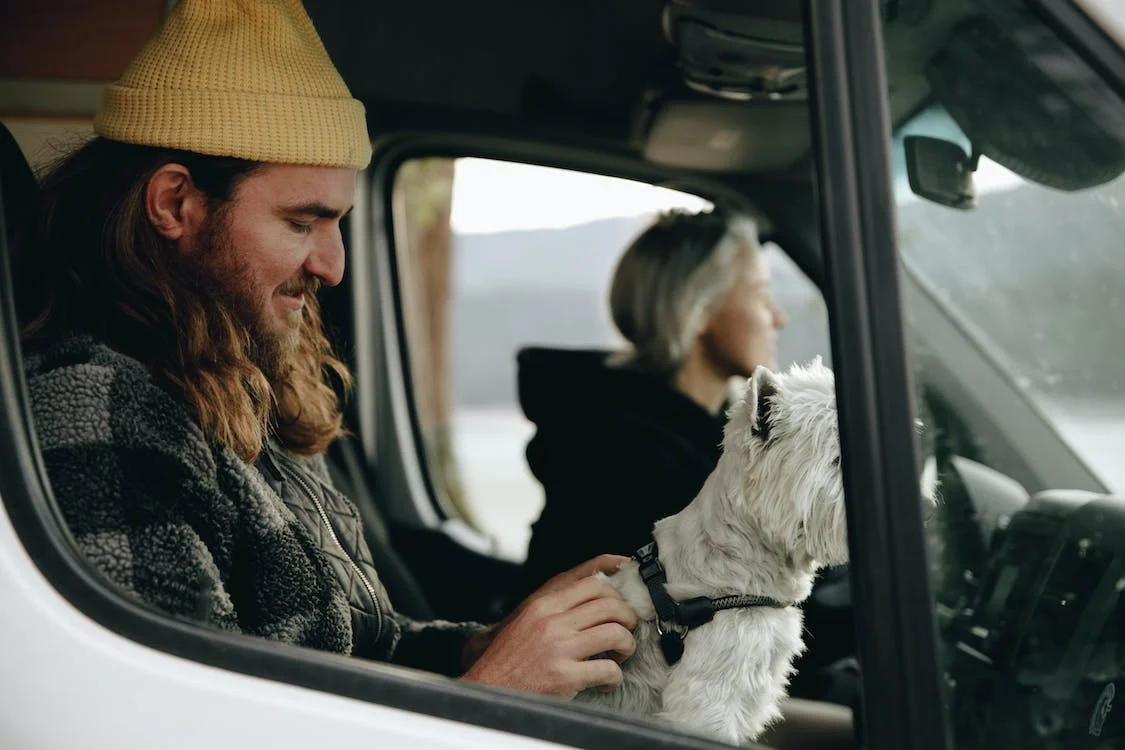With the summer holidays now here, many of us will be heading off on trips into the countryside or to other parts of Australia. If you’re thinking of bringing your dog with you in your vehicle, it’s best that you do it safely – and legally. This article will explore the ins and outs of pet transport, including what Australian laws say about it.
If you’ve ever driven along with your dog merrily sticking its head out the window into the breeze, you’ll know how much some dogs love to travel in cars. Keeping them safe when they’re in the car, however, is a top priority, and the rules apply not only for long trips but also for transporting pets over short distances.
The rules regarding travelling with pets in vehicles are pretty consistent across all Australian states and territories. While not all states have specific rules regarding securing a pet inside a vehicle with a collar/harness and a lead, the main rules are:
- you cannot drive a vehicle with a pet on your lap;
- you cannot drive a vehicle while an animal is tied to it (such as being tied to the back and walking along the road);
- you cannot drive a vehicle while leading the animal outside the vehicle (this applies to passengers as well);
- in NSW, the law stipulates that an animal must be seated or housed in an appropriate area of the vehicle;
- in addition, motorcyclists are not allowed to ride with an animal sitting between them and the handlebars (except for working farmers but only for 500 metres).
In regards to utility vehicles (utes), laws stipulate that if the dog is travelling in the back of the vehicle on the tray, it must be tethered to the vehicle or transported in a cage. It’s advisable that the dog is secured in the middle of the tray with enough slack on the lead for it to sit down but not enough for it to reach the side of the ute.
So while it’s not illegal in other states, such as Victoria, to drive with a pet unsecured in a vehicle, it still makes lots of sense to do so, for the safety of the animal as well as for the other vehicle occupants. Statistics compiled by the RSPCA have shown that around 5,000 dogs are injured or killed each year in Australia due to falling from a moving vehicle.
There are many options you can use to secure your pet inside your vehicle. One of the simplest is an attachment which connects to the dog’s collar and is then clipped into the seat belt buckle. However, rather than using a collar, it’s best to use a harness which will fit over the dog’s torso, minimising the chance of the dog being injured by or breaking free of the collar.
If you have a station wagon, SUV or other kind of vehicle with a large cargo area at the back, it’s possible to transport the dog there, ensuring there is enough room for the animal to sit, turn and lie down with ease, and that the area is separated from the rest of the cabin by a cargo barrier. It’s also a good idea to secure the dog inside the cargo area to minimise the chances of it being hurt in case of an accident.
Another alternative is to transport the dog in a cage, ensuring that there is enough room for the dog so it’s not cramped inside it. If the dog is small and the cage is placed on the back seat of the vehicle, it should be secured using the seatbelts so that in the event of an accident or having to stop suddenly, the cage won’t fly off the back seat.
If you are unable or unwilling to transport your pet yourself, Dogdayz offers a pet-transport service, which includes taking special precautions for COVID-19 and only using our trained staff and our transport vans. Check out our website for more information.

